“It’s all about encountering something so much more than you had imagined.”
When Naoki Ishikawa the renowned adventurer, mountaineer & photographer tells you to climb a mountain, you climb a mountain. My only worry was, which mountain was he telling me to climb? As the last mountain he climbed was K2!
This is my journey into the gaps of Naoki Ishikawa’s Japan, to see, feel and hear it for myself.
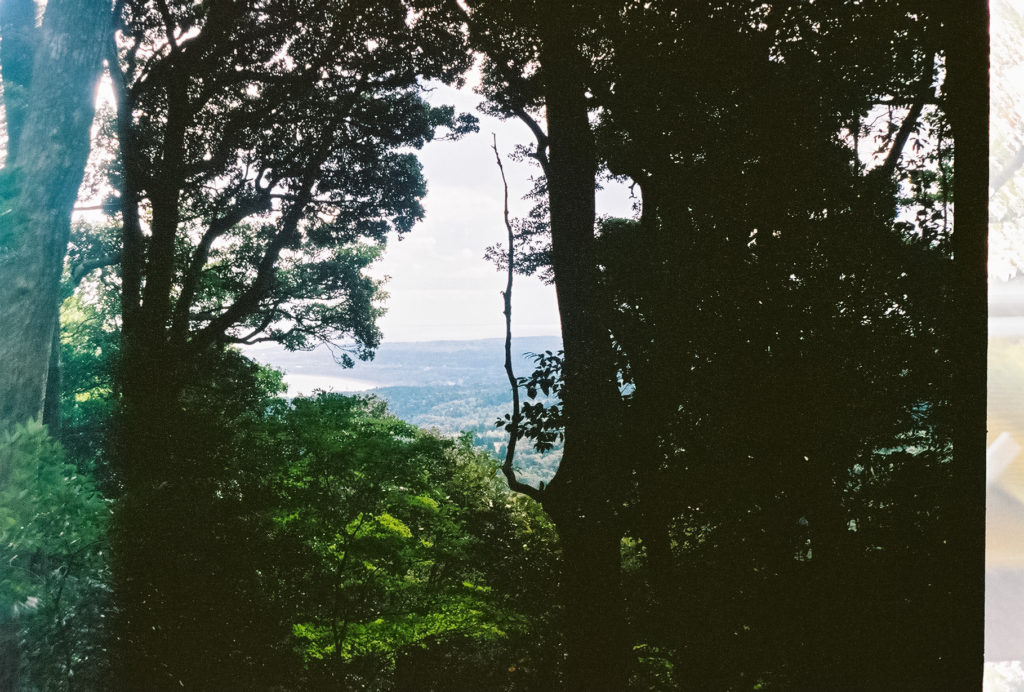
As it turns out the mountain I was to climb was a small peak at the end of the Noto peninsula, Ishikawa Prefecture called 山伏山 (Yamabushi Yama or Mountain-Priest mountain). It is said to be where the history of the Suzu area started, Naoki explained. On the top is a small Shinto shrine where people prayed for safe navigation and a plentiful catch in the forests of the north sea. This was my destination and I was excited and eager to climb it for myself following in Naoki’s footsteps.
Before I could reach my mountain top goal, I had a few other recommendations pinned on my map to see first; some ancient ruins, a local sento and of course Naoki’s photography exhibition —part of the Oku-Noto Triennale 2020+ art festival. What I didn’t know at this time; his photographs were soon to become my map to discovering a treasured area of Japan I had previously overlooked.
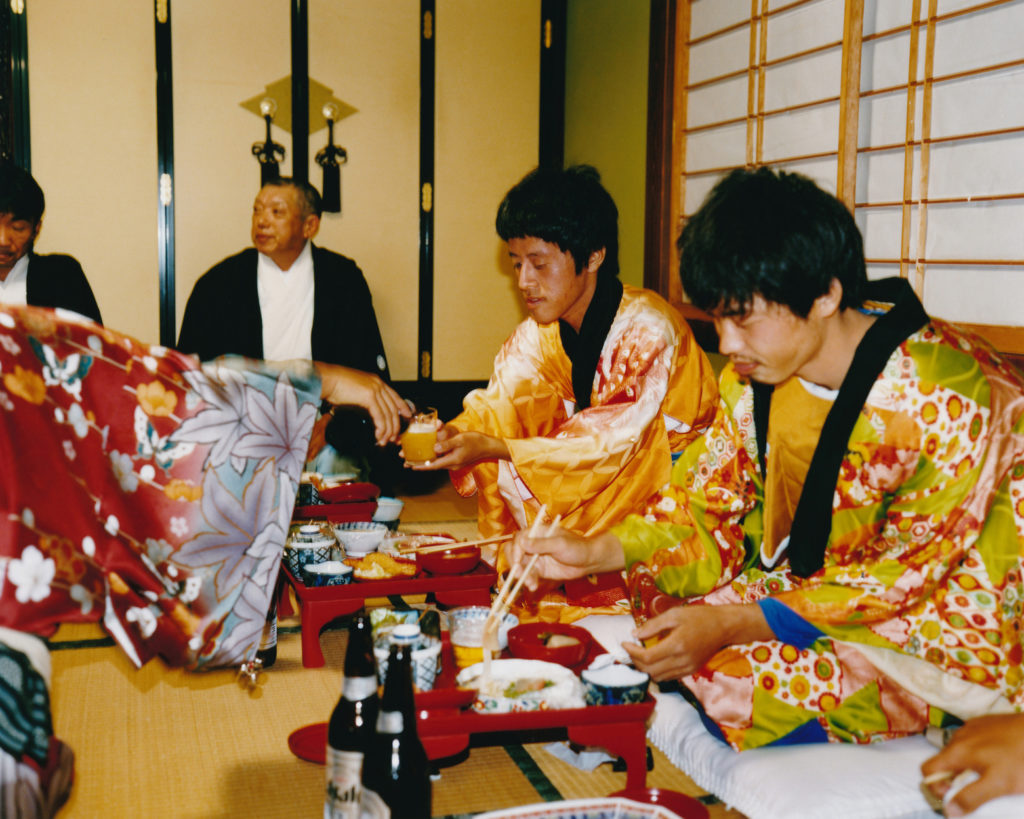
A Year and a Half.
If you haven’t heard of Naoki Ishikawa, allow me to introduce him in a little more detail by providing you with a brief background on a few of his early adventures that help frame his character and are key to defining the photographer he is today.
When only 17 years old, this junior high schooler traveled to India by himself on an adventure of self-discovery. While most of us at that age are hardly thinking about anything of any real significance, Naoki was setting out on a journey which would inform a life of travel and creativity. Then at the age of 22 —already a seasoned traveller— he joined an expedition set on traveling man-powered from Pole to Pole (north to south). Of which the innocent photographs of this young man’s journey are chronicled in a book of the same title. If that wasn’t enough, on reaching the South Pole, he then ticked off a few of the highest peaks in Antarctica, Argentina and Australia before summiting Qomolangma (Mount Everest) in Nepal.
Impressive to say the least, but the journey I want to tell you about happened just after his return to Japan. On an innocent trip —taking a break from adventuring— to Hokkaido and the Shiretoko Peninsula.
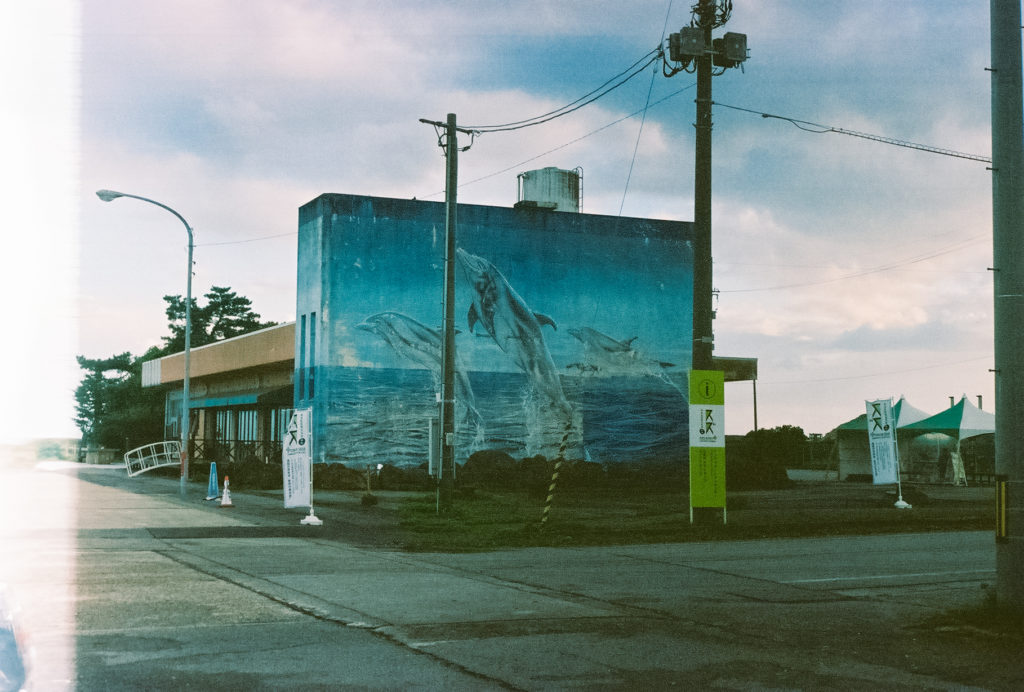
Sapporo Beer.
Inspired by Naoki, I dusted off my Leica II 35mm film camera (once my father’s) and with a couple rolls of Kodak Portra 400 started out on my own journey. I was late, the sun had already set as I drove into the thunderous full moon night, lightning illuminating the distant horizon out to sea. I had planned to eat something somewhere along the three hour journey, but in this remote corner of Japan, everything was already closed. Eventually I found a bar selling Chinese takeout, ironically five minutes from my hotel for the night.
This bubble era Hotel and conference center overlooking the bay had seen better years. When I arrived only the lonely ice cream & beer vending machines were waiting for me in the silent foyer. The receptionist was nowhere in sight. Waiting, I contemplated which cold treat to have, and decided that beer would go best with my Chinese food. Inspecting the vending machine more closely, it informed me that my choice of Sapporo Beer was sold out. At that moment the receptionist arrived to announce the closure of the bathhouse — it would reopen at 6am… early I thought.
“It’s not a dead end, it’s a place where you can open a door.”
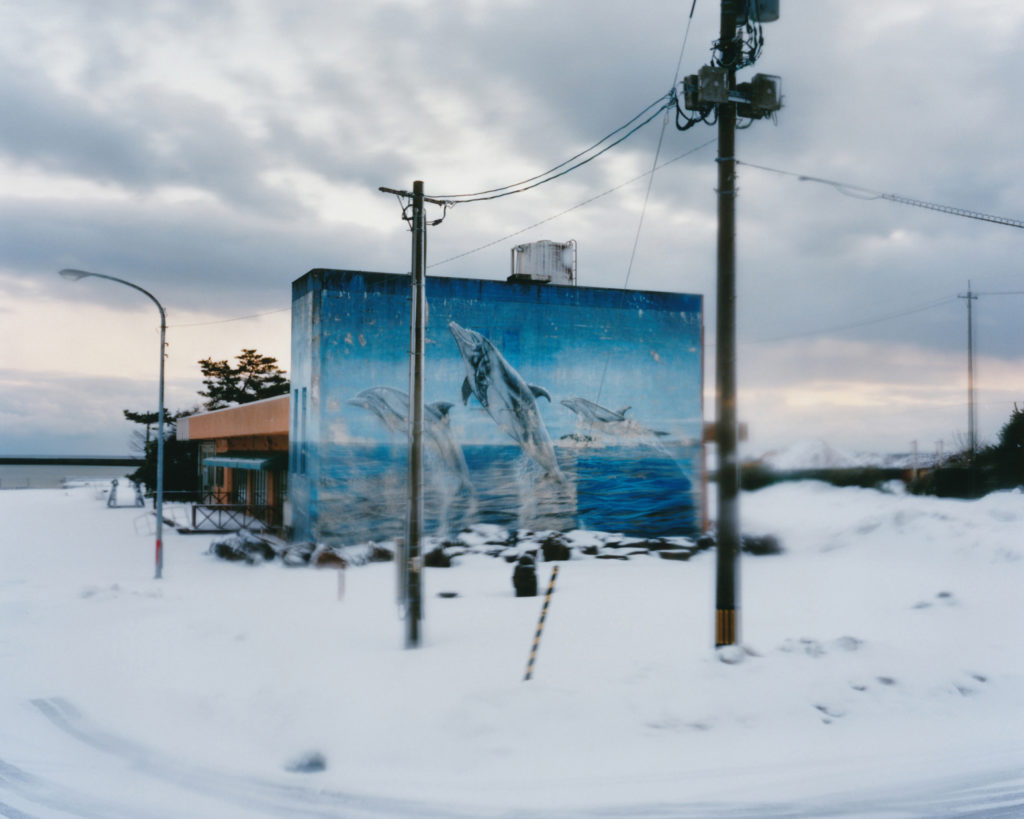
Open a Door.
That unsuspecting trip to Hokkaido showed this curious 23 year old that there were many unknown landscapes in Japan waiting to be discovered. Being curious myself and known to peruse maps for unusual geographic features worthy of adventure. I was intrigued to learn about Naoki’s attraction to such places?
Someone had told him that the Shiretoko peninsula was “like Alaska”, and it was. However, Naoki discovered more than expected, noticing that from our usual land-based perspective, places like this seem like dead ends. However, reversing your perspective and looking at them from the sea, they are vibrant entrances or hubs where people and things come in and go out — gateways interacting with the rest of the world. From that moment a fascination with islands, peninsulas and their often unique cultures was formed.
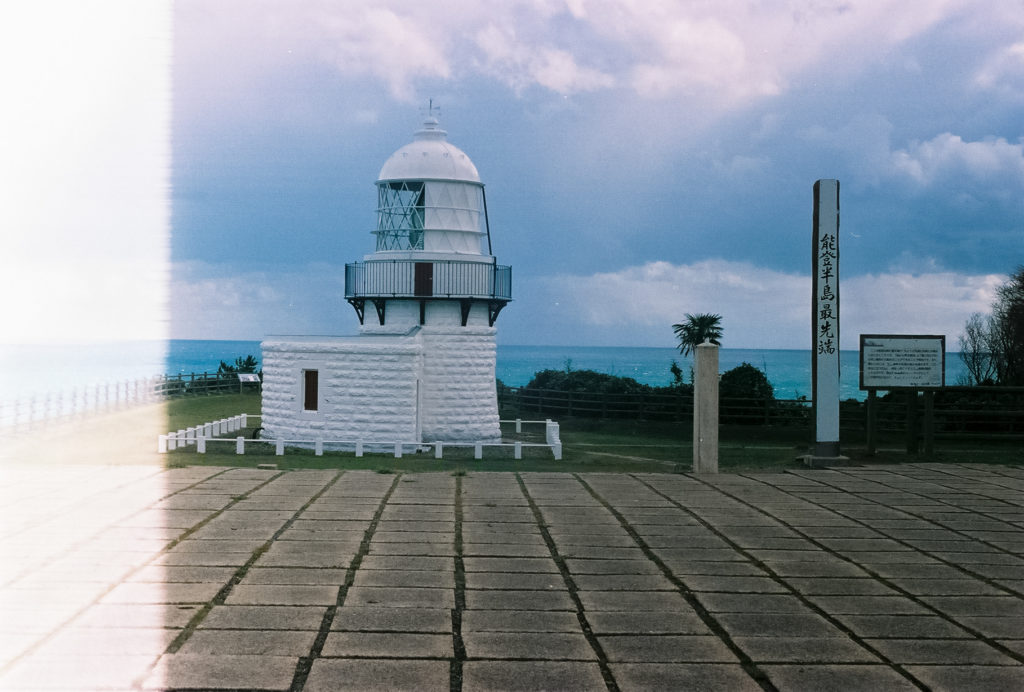
A Mountain to Climb.
Someone was in my room talking about a storm heading this way. Not a dream, but the television, which for reasons unbeknown to me, turned itself on at 05:54am!
Unable to fall back to sleep and in need of a coffee, the only thing to do was take a bath, after all, it was just opening. I was the only one in this typical hotel bathhouse; No Smoking, Yakiniku and Social Distance signs decorating the walls, with pink hair dryers hanging underneath the sinks and the obligatory scales residing in the corner of the changing room.
I’ve missed public baths during the last year. There was a time when I went several times a week and I was enjoying this quiet time now. Before too long another early bather entered the bathroom and perhaps in need of a coffee too, mistakenly got into the ice-cold bath, only to leap out shouting SUMITAI! (that’s cold). Leaving him to discover the happiness of the warm bath by himself, I took myself off to breakfast to discover the happiness of a warm cup of coffee. I excitedly arrived at the dining room. No coffee you say?
I was starting to wonder if I shouldn’t have stayed at home. NO! I had a mountain to climb and I think the climb has already started.
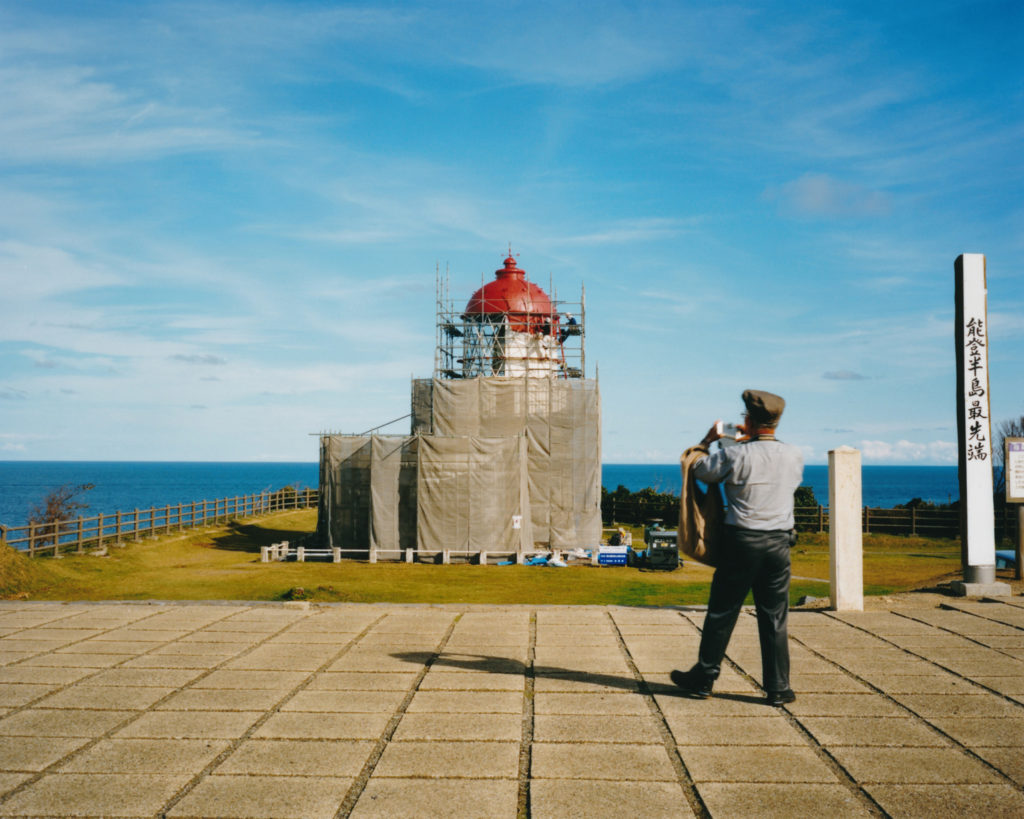
Glimpses of the Beautifully Mundane.
Naoki started revisiting these same places again and again, over long periods of time —up to ten years or more— slowly forming relationships with the people and places he was drawn to. In this way, as the relationships grew more intimate, he was able to start taking photographs reaching beyond how many of us view, consume and take photographs today. Not photographs on a showreel of self-curated nightlights, but natural glimpses of the mundane, photographed beautifully.
Or the not so mundane, for he often finds himself intertwined with local —sometimes secret— festivals, which vary from region to region. For it is at festivals where inhibitions dissolve and you see unconsciousness and self-consciousness that lies deep within, unleashed. “Japanese festivals make you forget yourself and give you a glimpse into the unconscious state of humanity.”
There is a beauty in the acceptance of everyday life, with the person you are and the life you lead. Perhaps this is the characteristic he is striving to capture through his lens.
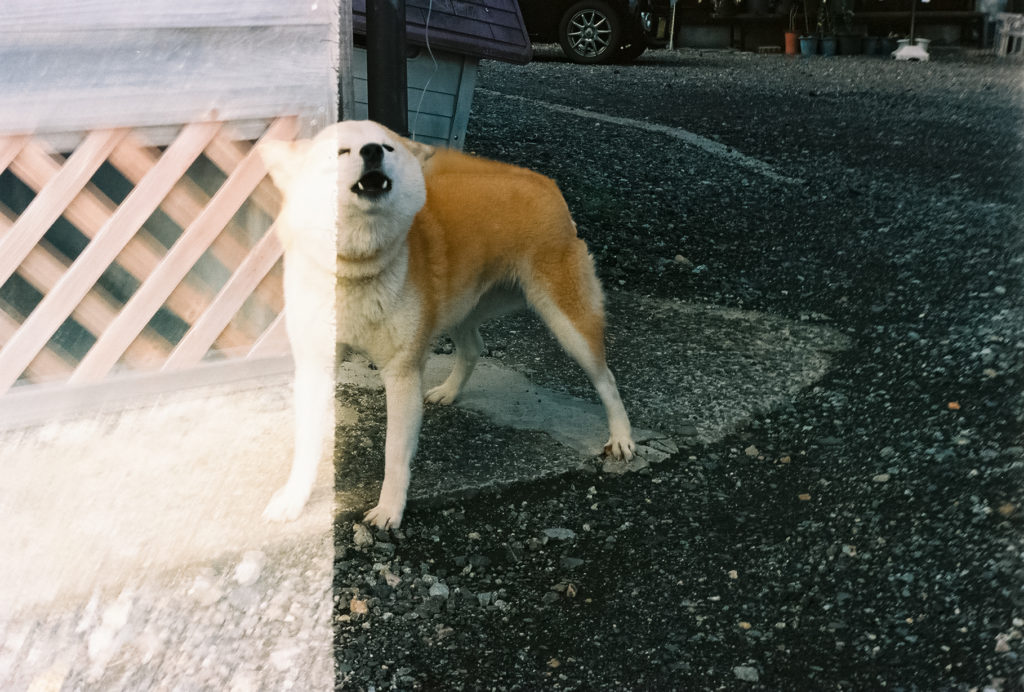
Hot Potatoes.
I was back on the road and the first stop of the day was just ten minutes down the coast to the Mawaki Ruins and Museum. The site was designated a National Historic Site of Japan in 1989. On entering the ancient building recreation, I found a man cooking sweet potatoes around an open fire in the centre of this one room house made of Kuri & Susuki (Chestnut and Pampas Grass).
A conversation ensued and I learnt about the Jōmon people who settled here as early as 6000 years ago. Naoki had mentioned that this site was special, in ways that are more felt than immediately visible. This place could easily be missed when rushing from one popular destination to the next. Sitting there on my tree stump, listening to the stories of hunting and gathering food and of the various tools used so long ago. I started to feel the significance of this location and why it interested Naoki so much.
Eventually it was time for our conversation to end as hordes of junior school students arrived with a chorus of loud Konnichiwas. Smiling, I left with a hot-potato in hand and a head full of images of our ancestors’ hard, yet simple way of life.
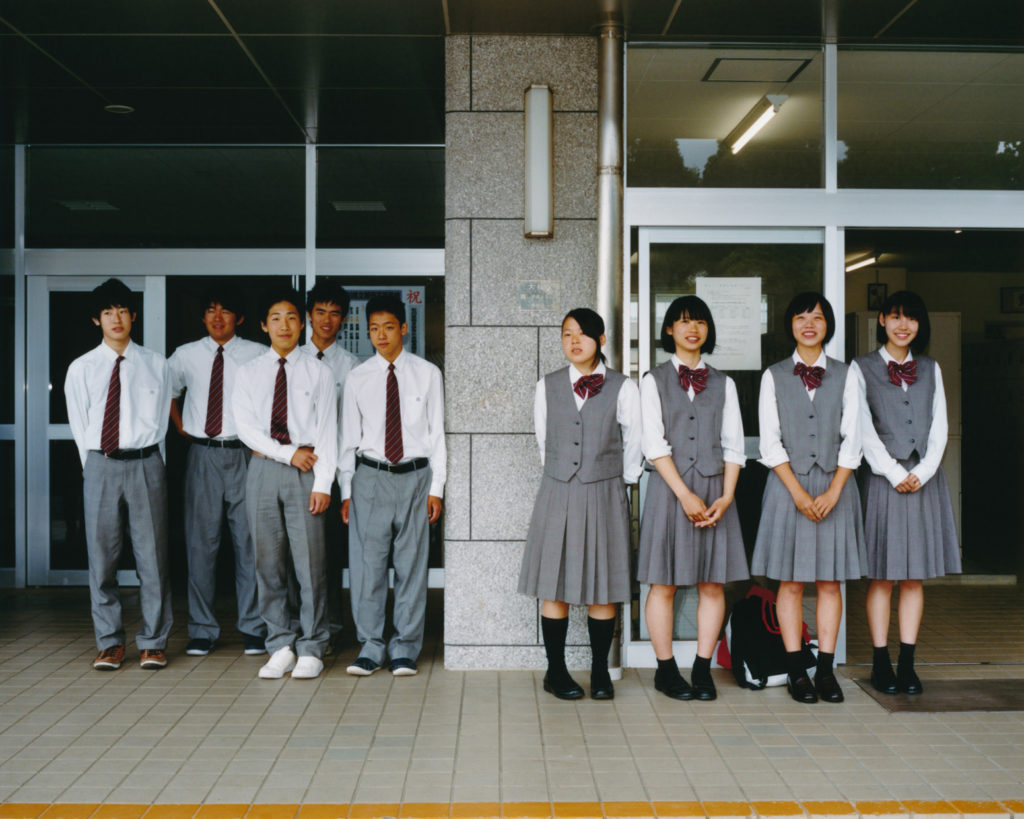
A Hidden Talent.
To Naoki it was not so much the geography —although it is part of the attraction— but more a fascination of the communities who have lived and continue to live there.
Talking further, I now see Naoki’s real —hidden if you like— talent, is that of forming relationships. Not only with his subjects, but with everyone and everything involved with his creative process and lifestyle. Let me try to explain; His dedication and relationship with books and book making, could only be achieved with the support of publishers, editors and designers, or that of film photography and the skill of the developers and printers who turn the click of a camera shutter into the beautiful prints we see, and that of his cameras and the one person in Japan who repairs his three Plaubel Makina cameras on rotation. One could say, the relationships come first and through curiosity, conversation and collaboration, his remarkable photographs and books follow.
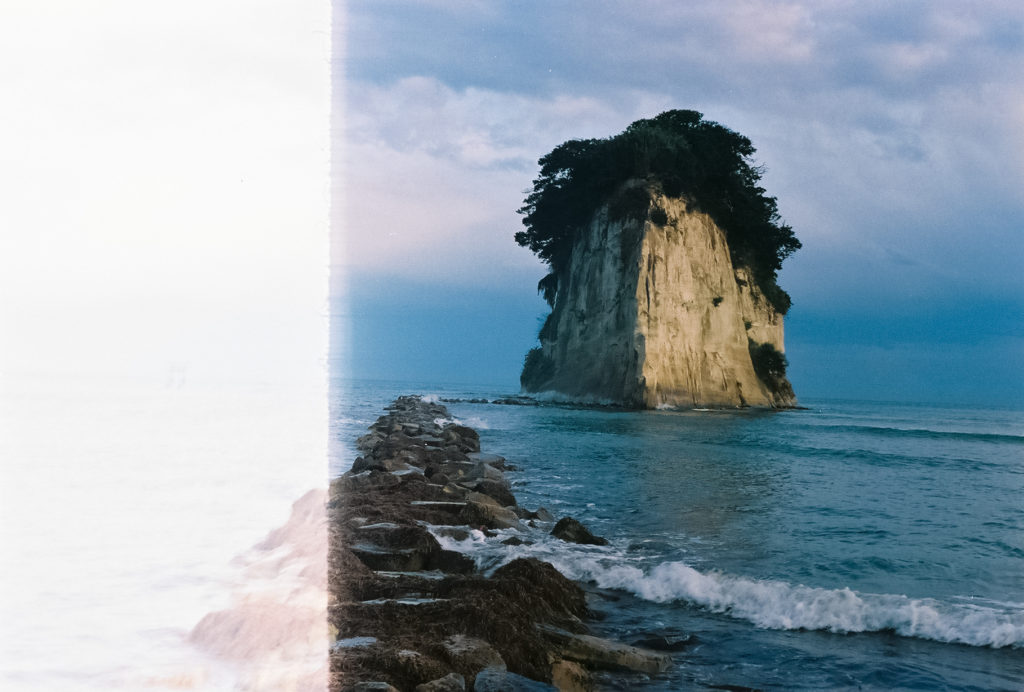
Curry Spaghetti.
The hot potato was hot, and good, but I was feeling a little ragged from the late night – early morning and in need of more sustenance. Before visiting Naoki’s exhibition I searched for a place to eat, only to find everywhere either closed or sold out. Settling for anything warm I found a nondescript shokudō (cafeteria) nearby. Not wanting to get my hopes too high, I choose the one item on the menu rousing the least expectation: Curry Spaghetti. My trick worked and it was better than expected. Now full and feeling warm inside, I was excited to finally see the photographs we’d talked so much about.
Sitting high above the —freezing— volunteer staff in this old warehouse near the waterfront, was one of my favourite photographs of the exhibit. A group of awkward high-schoolers in their natural habitat; standing outside their school, boys on one side, girls on the other. Local school children featured in many of his photos as do local residents of all ages, in all manner of activities. There are also many shots of the peninsula’s land & seascapes, including one of the Mawaki Ruins I had just visited.
Walking around the show, I recognised many of the locations from my conversation with Naoki, and there were others I knew nothing about. Nevertheless, a mental map was now being drawn more concretely in my mind through the images before me. These were to be my stepping stones on route towards my final destination: Yamabushiyama.

A Connected Island.
In order to capture what he sees on film, Naoki intermittently visited the Noto Peninsula over the last six to seven years. Sometimes as frequently as once a month. It’s almost like he became a local resident himself.
Within this extensive collection of photographs, you can see the different relationships made, not only with the people, but the place itself. And then not only this place, but you can imagine the islands, peninsulas and peoples it connects to via the sea. Understanding what Naoki means when saying the Japanese archipelago is not isolated from the world, but part of a chain of islands reaching far beyond the horizon. It was in this way, Naoki was rethinking the world as it once was as well as what it is and could be.
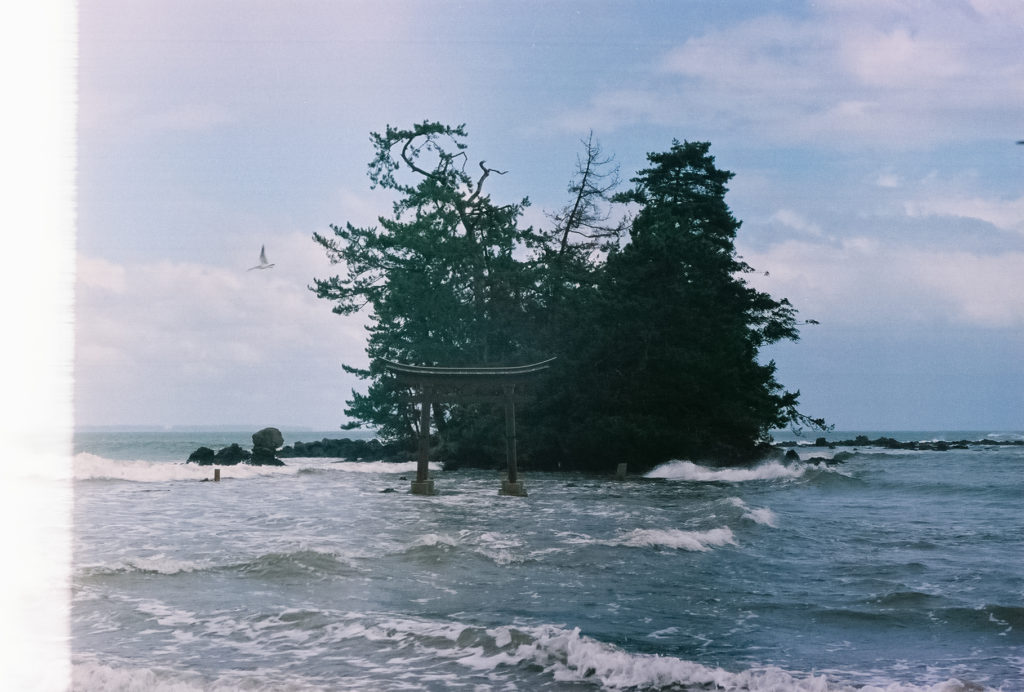
Drive a Car Like a Bicycle.
Now having seen the photographs for myself it brought his words alive. They were not vague amalgamations of other places in my mind, but real places waiting to be discovered in between the landmarks I already knew.
With my map in mind, I set out driving the side streets —the old main streets— replaced not so long ago with bypasses taking us to our desired destinations as quickly as possible and back again without really seeing anything. I’ve said it before, as have many others “The Journey Is the Destination” and I say it again now driving my car like a bicycle, slowly following the smaller streets through the gaps between here and there.
“You can peep into the gaps of everyday life” was how Naoki described his collection of photographs and I was starting to feel my perspective changing as I stopped to take my own photographs. The show had left me with a new found positivity and excitement for what was to come.
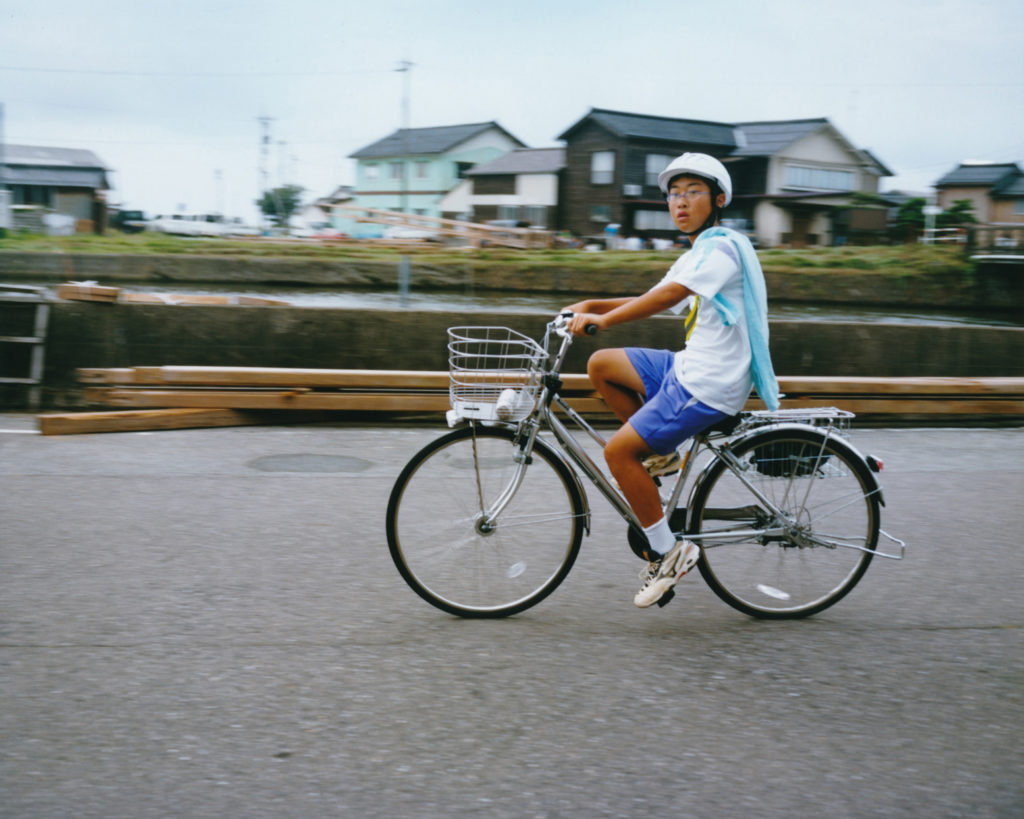
Digital Cameras Don’t Fit.
“Why use film to take these photographs?” I asked. That’s not exactly true. I actually asked if he was uniquely analogue in other areas of his life? We were talking about cameras and his film photography process. With only 10 frames (pictures) per film, it’s like you do the editing before you take the photograph. Using a digital camera you can take thousands of digital images, capturing everything from every angle with the mindset of if you make a mistake you can just delete them. “I don’t think it’s good for me to take a lot of pictures in this way. Digital cameras don’t fit my process or my body very well.” The physical process of opening the shutter to let light expose the film, is a once in the lifetime experience, recording his —life— journey in a split second.
He explains that he wants to make physical objects —books and exhibitions— that interact with people in a physical way. It seems fitting to use a physical process of tools and relationships to do that. “I want to make photo-books that will be meaningful 30 or 50 years from now.“
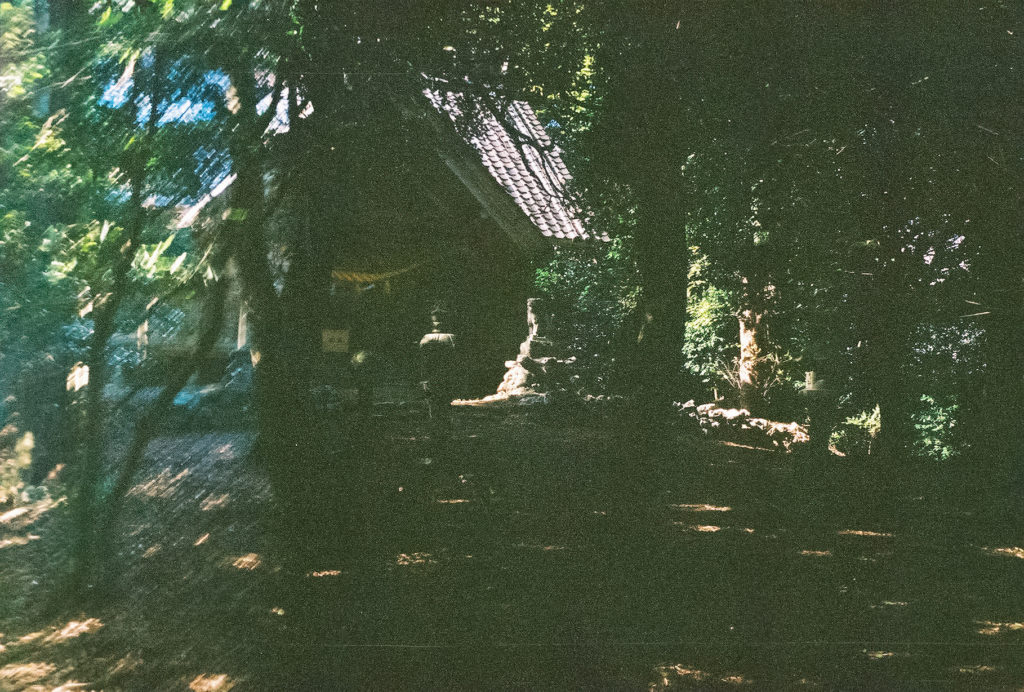
Taking My Own Photograph.
The day was coming to an end and I was in the small coastal town of Noroshi sitting on the far tip of the peninsula. If it was still light I would’ve been able to see Yamabushiyama “just over there”, you have to imagine the owner of the inn pointing over his shoulder. As luck would have it, I was staying in a room named “Yamabushi” (Mountain Priest). I had wondered why I was in this curious little tatami room at the back of the inn. The room that had a bath with two cold water taps? Why was I not in a room with ocean views? Was I meant to stay in this room with the same name as the mountain I was to climb tomorrow? I had a peculiar feeling it was a sign that I was on the right track.
The next morning, with little more than a pin on an otherwise empty Google Map, I found my way to the trailhead. Trusting the path I was following through a forest of dense trees would lead me atop. As I made my way up, I soon came across a real sign I was going the right way: a Torii, the gateway to the Shinto shrine ahead. Bowing I passed beneath and kept climbing the now extremely steep succession of switchbacks and finally along the gentle ridge line, views of the sea appearing through the trees on either side. Before I knew it I was there, looking at the weathered shrine made of wood covered in green lichen. I felt like I was inside the photograph I had seen the day before. I had made it and now I wasn’t sure what to do next?
I took my own photograph following in Naoki’s footsteps, my own physical split second of my own journey. It was the last photo on the roll so I sat myself down on the steps of the shine —after giving gratitude to the gods within— and changed the film in my camera. With only the sound of film winding back into its case, the chirping of insects and waves crashing against the rocks in the distance. I sat there not moving for a good thirty minutes; quietly watching and listening to my surroundings.
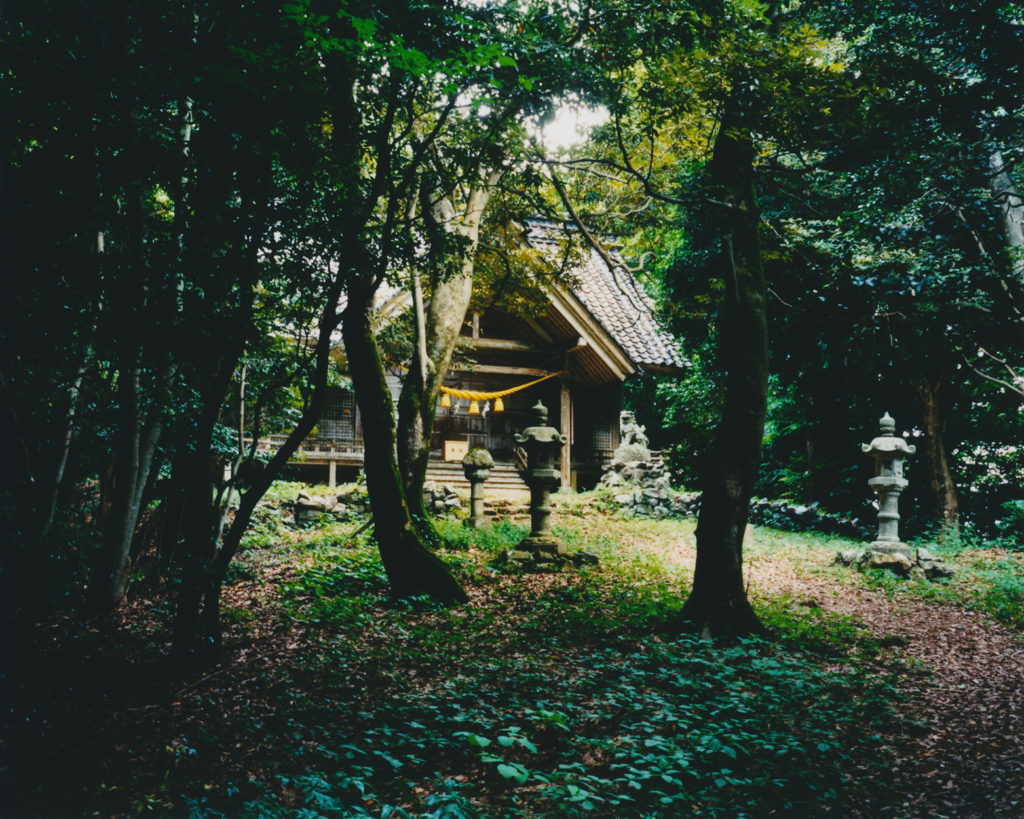
The Purpose Is.
People often talk of having a purpose. Had I reached my purpose by climbing this mountain? I couldn’t say. But I like the way Naoki summed up purpose in our conversation.
He expressed that having a purpose was important, yet that he also liked to deviate from it given the chance. “Of course having a purpose before taking a trip is essential, but it’s often more interesting to encounter things that are outside of it.”
The purpose is to not follow a purpose too closely… I love that.
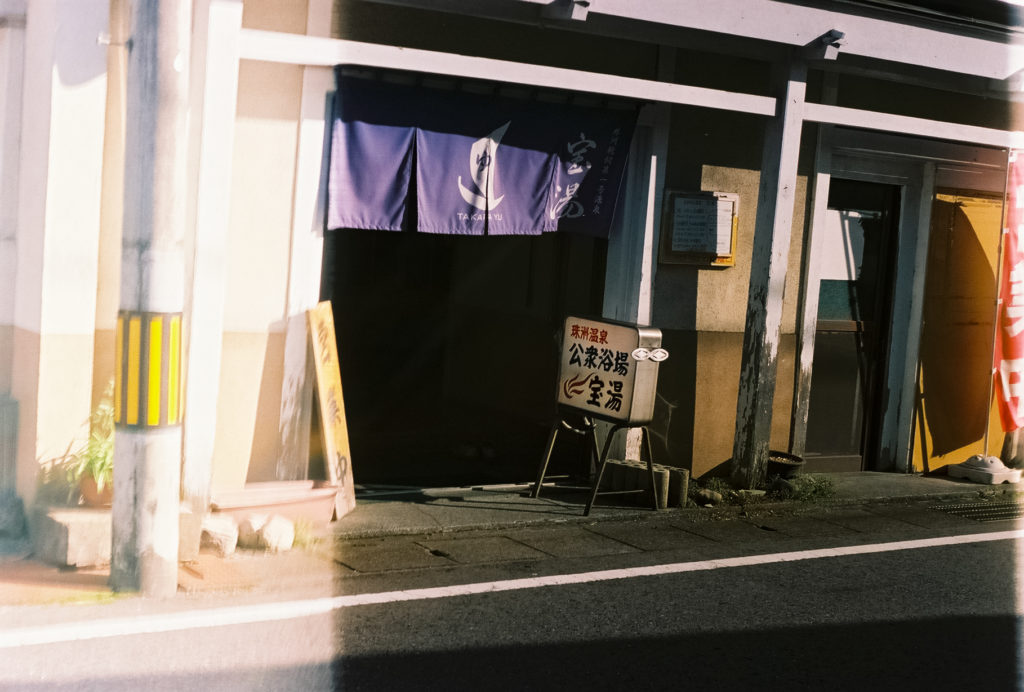
What’s on the second floor?
Instead of rushing home after reaching my goal, I decided to take another look and click the shutter once more at some of the places I had visited on the way here. Today was a different day, I was a different me and I had film in my camera.
I mentioned before that Naoki had recommended a small Sento called Takarayu. On the way here in the rain, it had been closed. This time the sun was shining and it was open. Standing in the middle of the road, I took a couple of shots of the seemingly normal sento — twice because the first time I left the lens cap on! In two minds whether to go in or not, I remembered Naoki’s words “If you go there you will be made to feel welcome.” So I entered.
And was I in for a surprise.
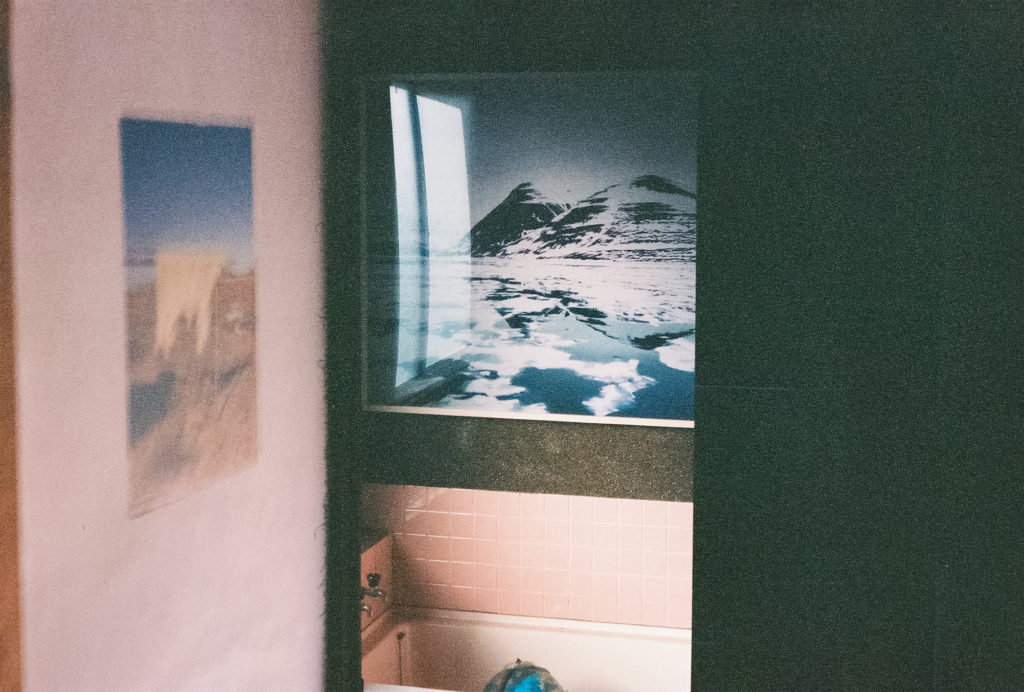
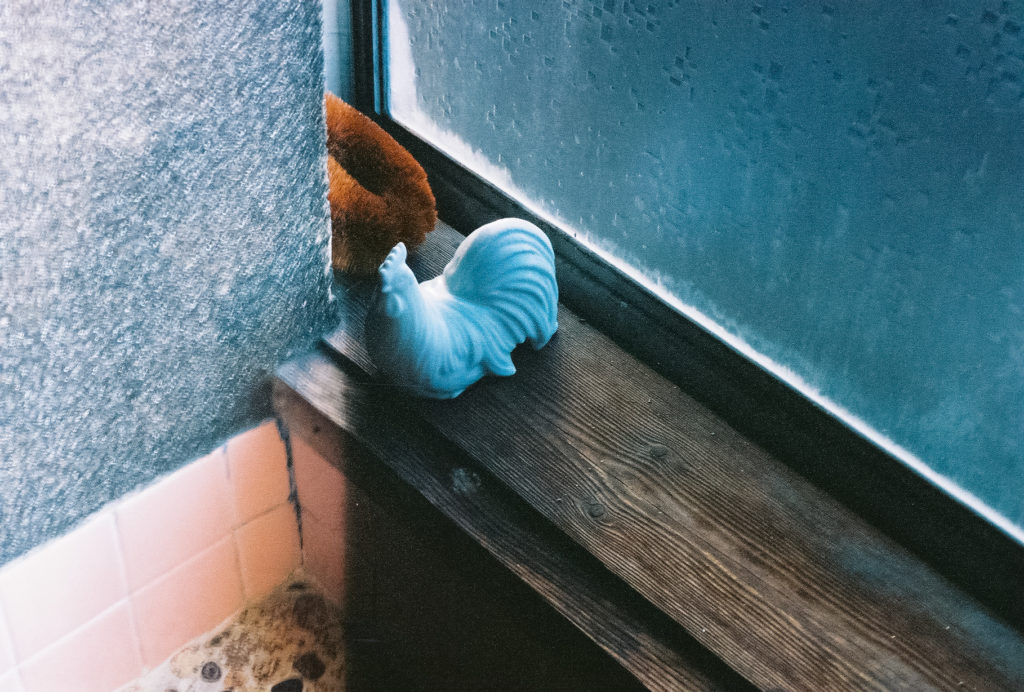
The bath itself was local-rundown-lovely, full of old men and I expect women on the other side of the dividing wall. The obligatory mosaic of not Fuji-san, but Mitsukejima —a funny little island protruding out of the sea, with what looks like a fine head of pine-tree-hair— and the Suzu coastline decorated the wall on my side, yet the real surprise was still to come.
In the reception as I was leaving, was a rather large photograph of a mountain —Everest perhaps— which I suspected to be one of Naoki’s. I started up a conversation with the owner who I now recognised from one of the photographs in yesterday’s exhibition. Sure enough the mountain shot was one of Naoki’s and we chatted for a while about the obvious things and that was that.
Just as I was putting on my shoes, I noticed a red-carpeted set of stairs leading to the floor above. The words “What’s on the second floor?” came out my mouth before I knew what I was saying. With that Hashimoto-san jumped into action leaving his post at the entrance to lead me upstairs into an enormous room I immediately knew. I had once again stepped into yet another one of Naoki’s photographs.
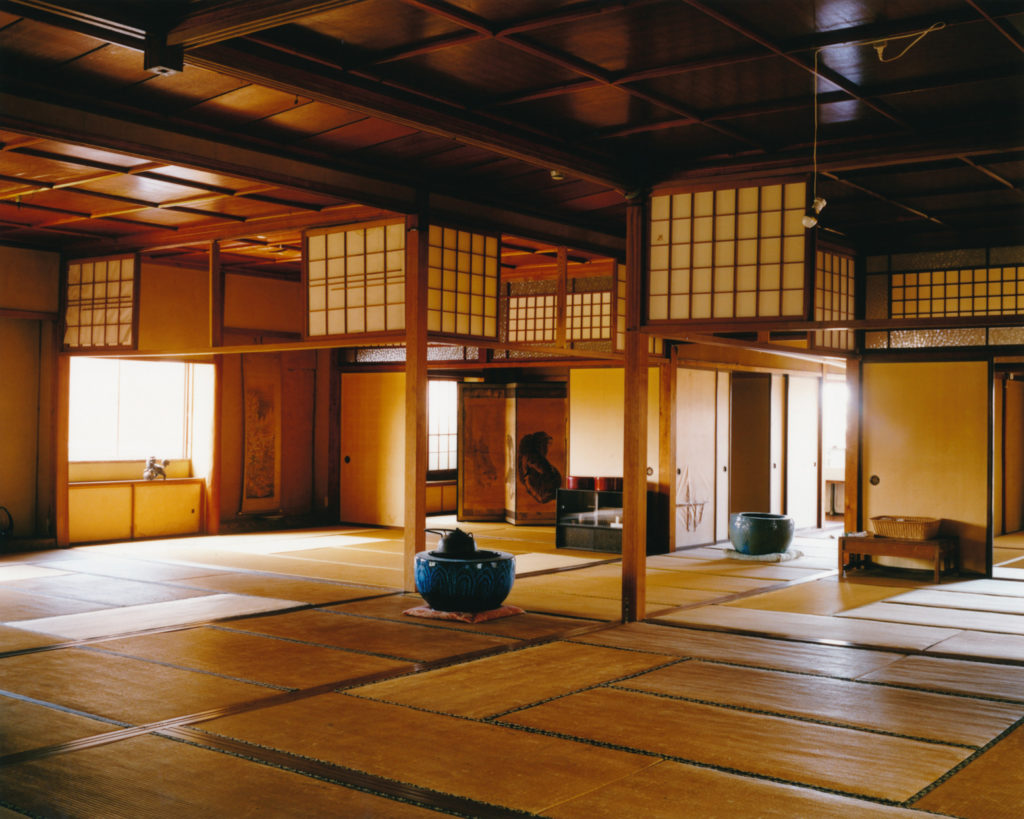
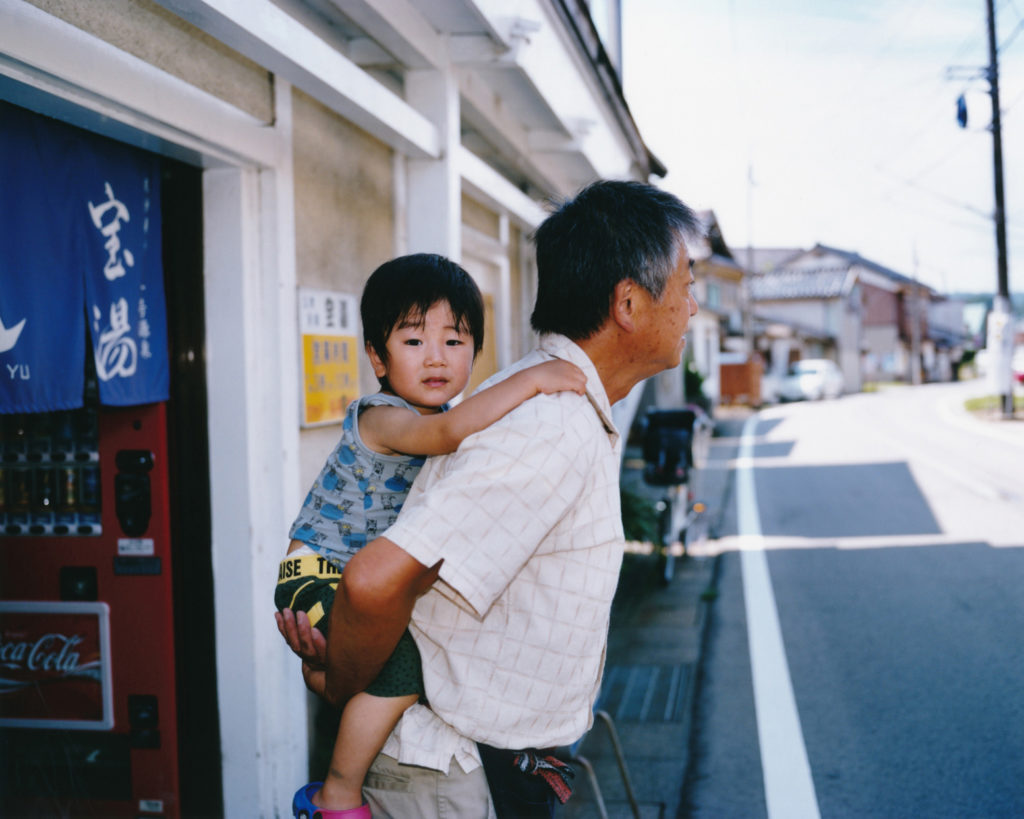
The Books
Don’t worry if you can’t visit the Noto peninsula and Naoki’s exhibition yourself. The photographs will soon be available in a new book called: Oku-Noto Hantou. It’s the third in a series of books portraying peninsulas of Japan, starting with “Kunisaki Peninsula ” followed by “Shiretoko Peninsula” and now “Noto Peninsula“.
Naoki Ishikawa, Oku-Noto Hantou, Seidosha, December 2021.
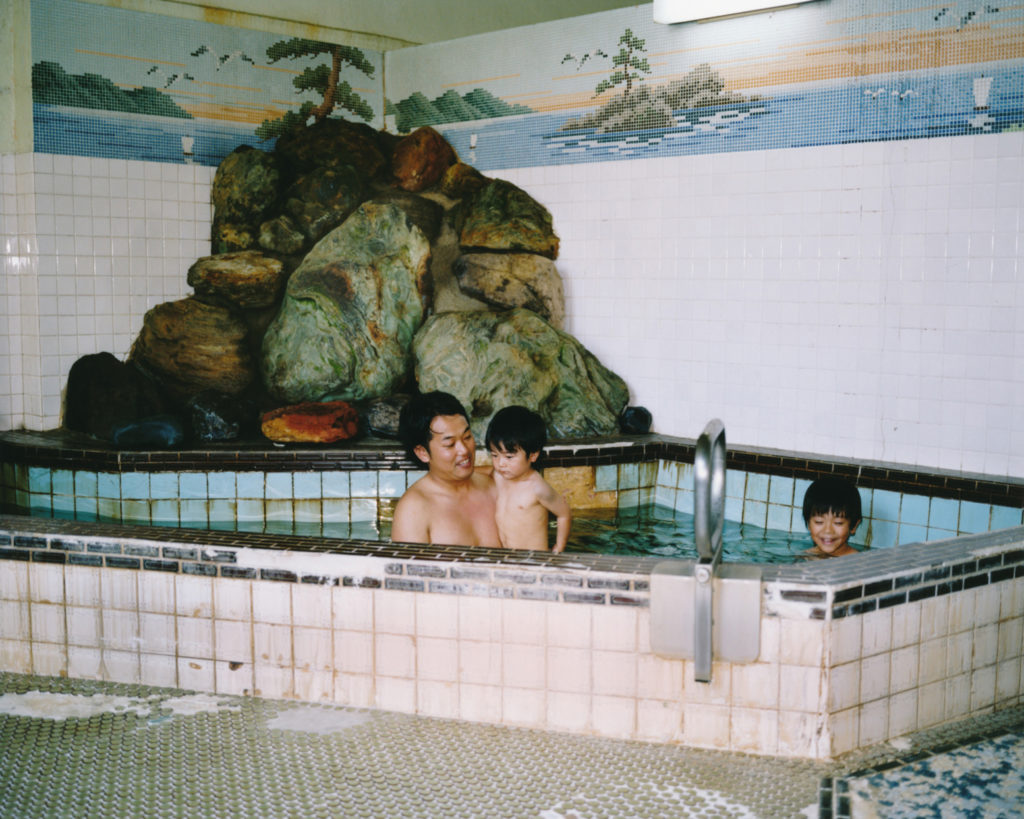
If one book wasn’t enough he has a second release at the same time called: Streets Are Mine. This book follows his adventures closer to home, in fact right outside his doorstep in Shibuya, Tokyo. With international travel restrictions in place and expeditions cancelled, Naoki shifted his focus towards Shibuya and specifically the mice inhabiting the city streets.
During the state of emergency, while people stayed indoors, the mice came out in large numbers. Naoki set out to capture their reclamation of the street using Fujifilm single-use cameras (Utsurun Desu). Describing his hometown of Tokyo as “a squishy city – where the landscape changes before you can feel nostalgic”; evermore so over the last two years where everyone seemed preoccupied with Covid and the Olympics. His aim was to make a photo-book capturing the real city from the perspective of a “city quickly changing before you can love any part of it”.
Naoki Ishikawa, Streets Are Mine, Yamatoshobo, December 2021.
※Exhibition「Naoki Ishikawa ― STREETS ARE MINE」will be held at GALLERY A4 from December 10th, 2021.
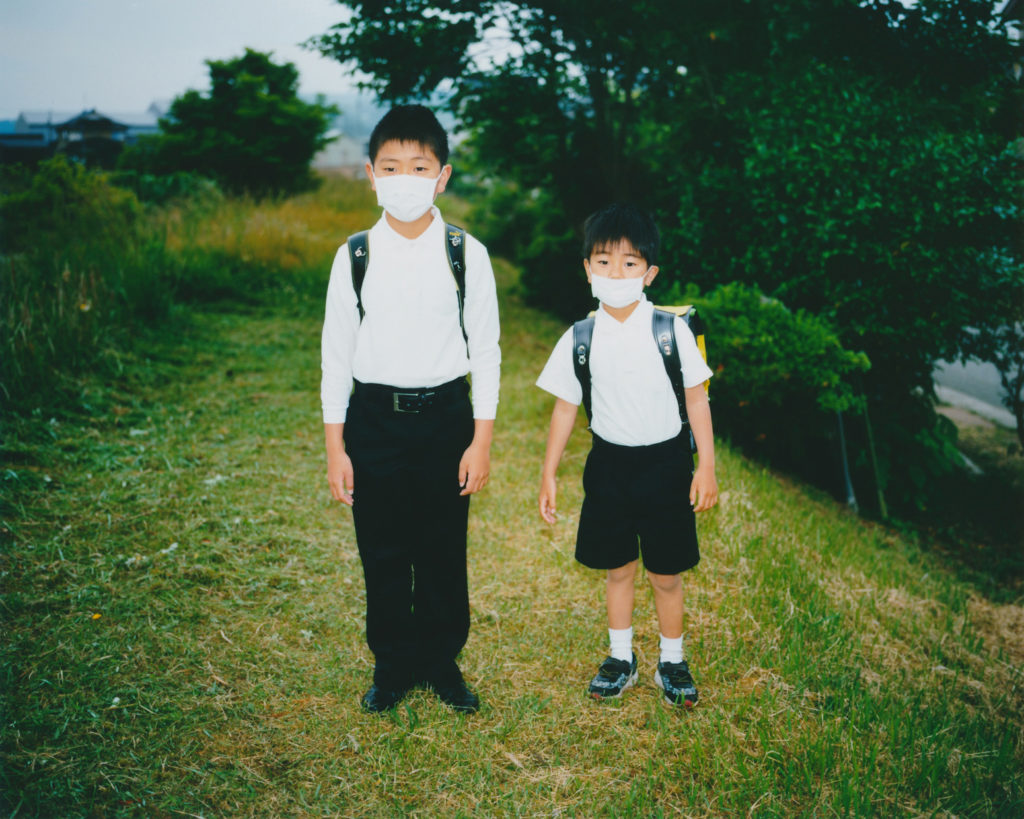
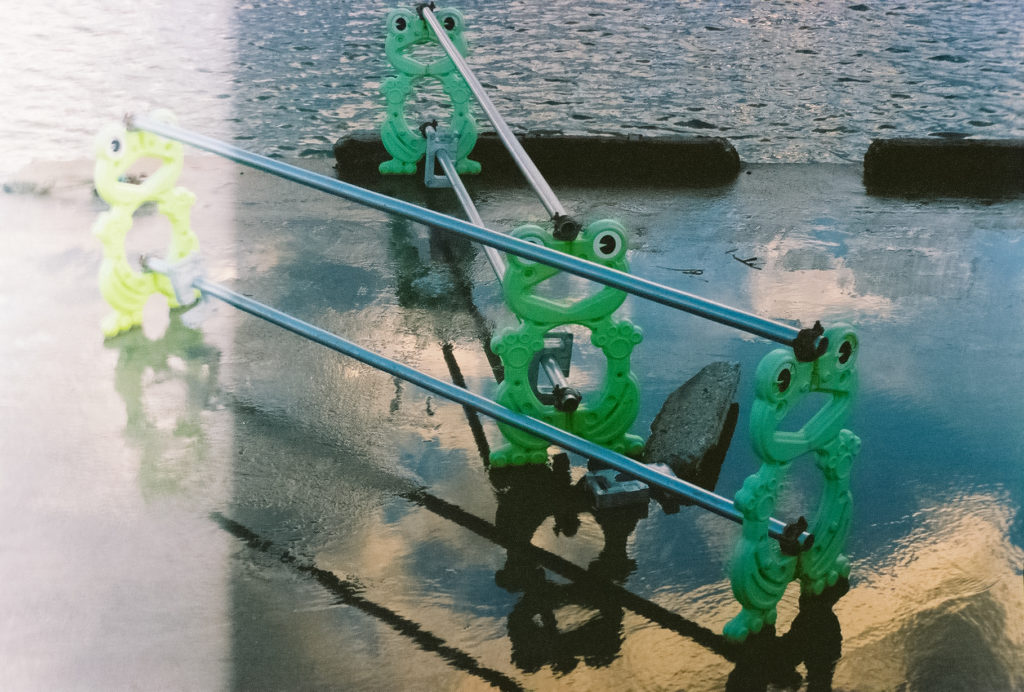
Discover Something More.
Somehow I had talked myself into a secret Naoki Ishikawa exhibition and had the owner as my tour-guide. Naoki was right, I was made to feel welcome.
Was the trip a success? Absolutely. After a few minor setbacks, I did find a great cup of coffee and some of the best udon I’ve ever eaten… not to mention a secret exhibition hidden within an innocent looking sento. Guided by Naoki’s words and photography, I was able to see the landscape and its inhabitants from a new perspective, traveling through the gaps of everyday life.
You may be wondering what Naoki has to say about success?
“It’s about encountering something so much more than you had imagined. I don’t think it’s success when you achieve your goal, I think true success is achieved when you discover something more than your goal.”
I thought about these words as I drove home. I had discovered more than I had expected. I only had to wait and see if any of my photographs turned out successfully.
…and so it goes.
James Gibson
In a time where human actions are ever more interconnected and reciprocal, James —through travel, photography, film and creative writing— is exploring the topics of ‘design your life’, ‘do-nothing design‘ and ‘well-being’ from a viewpoint of natural regenerative design. The whole time asking the question: Do you know what good health —micro to macro— feels like?
Photographs courtesy of Naoki Ishikawa – © Copyright Naoki Ishikawa 2021 or James Gibson – © Copyright James Gibson.
Find Naoki Ishikawa
Homepage: straightree.com
Instagram: @straightree8848
Find James Gibson
Homepage: www.arukari.co











